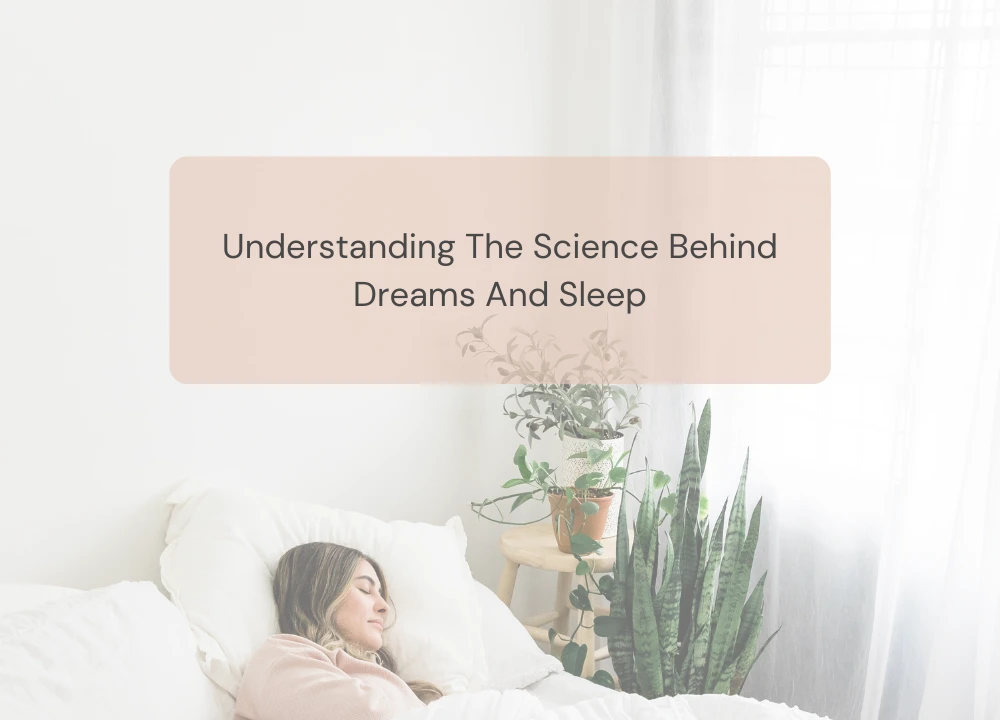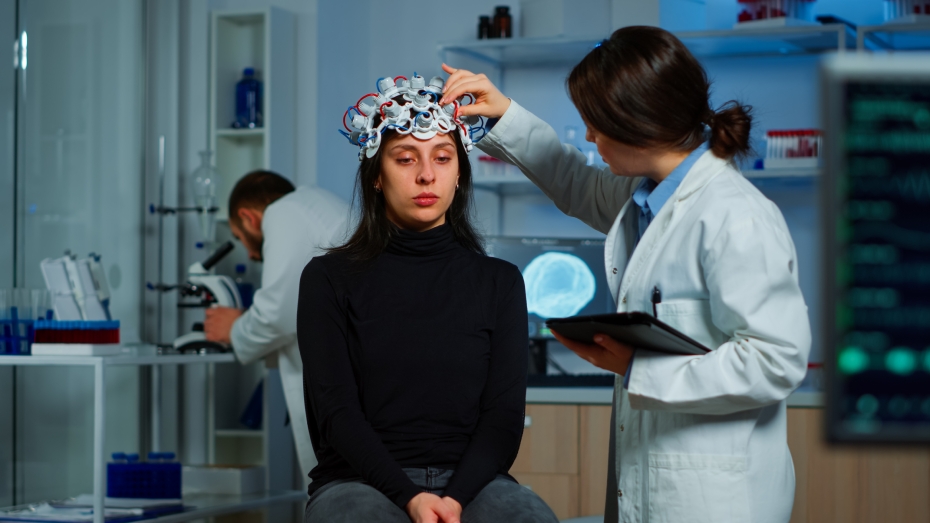Understanding The Science Behind Dreams and Sleep

Every night while a person is asleep, dreams are one of the most extraordinary experiments in psychology and neuroscience. They demonstrate how our brain can produce a vast array of conscious experiences when disconnected from the outside world. Our knowledge of dream phenomenology has improved thanks to content analysis and developmental investigations.
Parallel to this, research on brain lesions, functional imaging, and neurophysiology has improved our understanding of the neurological underpinnings of dreaming. It is now possible to begin to combine these two lines of research to address some of the key questions that dreams raise for cognitive neuroscience, such as how the conscious experiences of the sleep cycle relate to brain activity, why the dreamer is largely disconnected from the outside world. in the world and whether dreams are more about imagination or perception.
One of the most intriguing and enigmatic parts of sleep is dreaming. Sigmund Freud contributed in the late 19th century to highlight the potential significance of dreams. From then, much research has been done to understand the neuroscience and psychology of dreams. Even while science is learning more, we still don’t know much about dreams and sleep.
Also the most essential query, “Why do we dream at all?” is still the subject of considerable discussion. Even though everyone dreams, each person’s dreams and how they affect their ability to sleep will be different. The basics of dreams, the potential effects of nightmares, and the steps you may take to improve your sleep quality with pleasant dreams are all significant to know, even though there is no straightforward explanation for the meaning and purpose of dreams.
What Effect Do Dreams Have on Sleep?
One of the most distinctive and fascinating features of sleep is dreaming. Typically, a regular night’s sleep involves two hours of dreaming. Rapid eye movement (REM) sleep is when dreams are at their most powerful, but different types of dreams can arise anytime during the sleep cycle.
Positive, harmful, or downright confusing images might appear in dreams, probably reflecting a period of highly vivid imagination while you were asleep. However, in pleasant or unpleasant dreams, experiences from when you are awake commonly appear in dream material.
Although there is still some disagreement among experts as to why we dream, a lot of data suggests that dreams can help the brain integrate emotions and memory. Dreams seem to play an important role in ensuring restful and regular sleep. However, dreams can interfere with sleep and even impact a person’s waking hours.
It is only reasonable to question how dreaming impacts sleep quality and whether nightmares harm sleep. How to avoid terrible dreams given that almost everyone has good and bad dreams.
Modern Studies on Dreams
Although dreams have interested us since the beginning of time, comprehensive scientific research on them is still relatively new. According to Freud’s prediction in The Interpretation of Dreams, deeper research will one day explore the path further and find an organic basis for the psychic event. This article analyzes recent research that is beginning to match Freud’s prediction.
It is challenging to experimentally modify dream content by exposure to stimuli before or during sleep because dream consciousness is only available through reports rather than direct observation.
Therefore, predicting the content of specific dreams is difficult, and most modern sleep research attempts to retroactively relate neuronal activity too dream form rather than dream content, i.e., focusing on characteristics of all dreams rather than dreams themselves. The study of dream sleep. neural correlates of specific sleep. As we shall see, encouraging progress has been made in linking brain damage and developmental studies to the phenomenology of dreaming and the underlying brain activity.
Dreams: Transition or Continuous Process?
It is possible to argue that we dream only as we transition from sleep into alertness and that we are unconscious during sleep. When one has just had a vivid dream, it appears complicated to accept that it was made up in a flash during an awakening, even though such a claim is difficult to refute conclusively (just as it is difficult to prove that one is not a zombie when awake). It is true that:
- The estimated time in the dream report coincides nicely with the amount of REM sleep that was experienced before awakening and
- In REM sleep behavior disorder, where muscular atonia is altered, movements match the reported dream.
Dreaming During NREM Sleep
Reports collected after awakening from a deep NREM (non-rapid eye movement) sleep are more challenging to assess because of the disorientation brought on by increased sleep inertia. The following examples show that dream awareness can exist in NREM sleep and is not limited to memories of earlier REM sleep dreams:
- It is occasionally possible to “tag” NREM reports with sounds delivered during NREM sleep
- Some NREM parasomnias (sleep talking, sleep terrors)
- “Full-fledged” dreams are occasionally reported upon awakening from the first NREM episode before any REM sleep occurred and even in naps consisting solely of NREM sleep.
Reliability of Dream Reports
It is essential to keep in mind that dream reports may be less reliable than reports of waking experiences due to several factors, including:
- A dramatic state change because we report a sleep experience while awake
- A significant time delay because dream reports are collected after the experience, which may cause passive forgetting and interference
- Challenges with verbally describing experiences that are primarily visual and emotional.
Dream Phenomenology and Its Connection to Brain Activity
Our level and type of conscious experience during sleep vary greatly. Despite the ongoing neuronal activity in the thalamocortical system during slow wave sleep (SWS) in the early night hours, consciousness can almost entirely disappear. Subjects who are awakened from other sleep stages describe “typical” full-fledged dreams, which are lively, sensorimotor hallucination experiences with a plot. While the dreamer is asleep and highly conscious (she has vivid sensations), in some way, her brain is constructing a narrative, populating it with characters and settings, and producing hallucinogenic visions.
We will first concentrate on neural activity during REM sleep to obtain insight into brain states conducive to dreaming because reports of awakenings from REM sleep frequently contain descriptions of typical dreams. However, as will be explored later, it should be emphasized that other brain states, such as late NREM sleep, can also produce dreams.
What Do Dreams Consist Of?
For this article, we’ll define dreams as sleep-related thoughts we recall upon waking. Dreaming when you sleep is, therefore, distinct from “daydreaming.” Sound, taste, and smell are uncommon in dreams; scenery and people typically make up dreams. Dreams might be anything from bizarre to relatively uninteresting snapshots of a recent occurrence.
Everyone’s dream frequency and content differ significantly, likely due to various reasons. For instance, if someone or an alarm clock wakes you, you will remember your dreams more clearly. You might recall a dream when it’s fresh, but waking up after multiple sleep stages can cause memory loss. With age, dream recall also varies. Dreaming is less frequently reported by older people. Older people may dream but often can’t recall it upon waking due to weaker memories.
The medial prefrontal cortex, a brain region at the front, is linked to dream recall and handles memory and decision-making. It is associated with dream recollection. Fewer dreams are recollected when this brain area is injured, which may indicate that the person dreams less frequently. Brain cell density in the medial prefrontal cortex may determine why some dream more than others. The amount of REM sleep that individuals get is also influenced by heredity. The odd dreams frequently occurring in REM sleep may not occur in people who get less REM sleep.
Dreaming And Waking Life Parallels
Comparing waking and dreaming states, linked to brain activity shifts, reveals insights into dream nature and brain function. It’s surprising how closely the dream world mirrors the waking world. The dreamer may occasionally be unsure about his state of consciousness. Undoubtedly, dreams are not produced in a vacuum; instead, they closely mirror the structure and operations of our brains.
The majority of the time, the dominant perceptual modalities and sub modalities of wakefulness are strongly represented in dreams. Dreams frequently feature people, faces, places, objects, and animals in addition to being vividly colored, full of forms, and rushing. Dreams can evoke pleasure, pain, sounds, and even rare sensations like touch, smell, and taste. They aren’t just abstract thoughts but tangible sensory experiences.
Conclusion
In conclusion, dream consciousness mirrors waking states but varies in aspects like self-awareness and memory across different dreams. To link dream phenomenology to brain activity, start with the neurophysiology of REM sleep, especially its recent regional activity insights. It has been established that the initial association between REM sleep and dreaming is false. Thus, we need to focus on specific brain activity to link dreams to neuronal actions.
The deep detachment from reality during dreams presents a key unresolved issue in understanding them. Evidence from various studies suggests that dreaming is akin to imagination, characterized by “top-down” brain activity flow. Seeing dreams as intense imagination provides research hypotheses and clarifies traits like abrupt changes, ambiguity, and limited recall.










